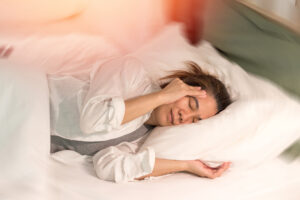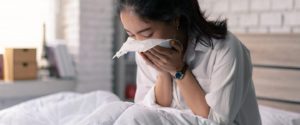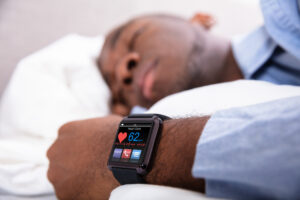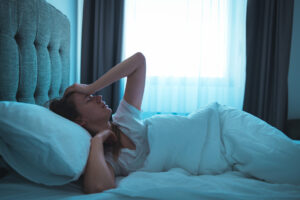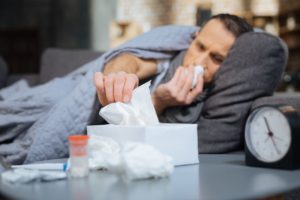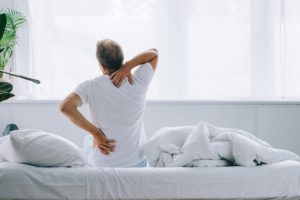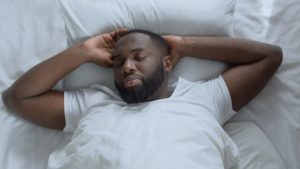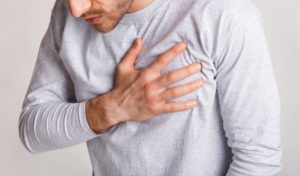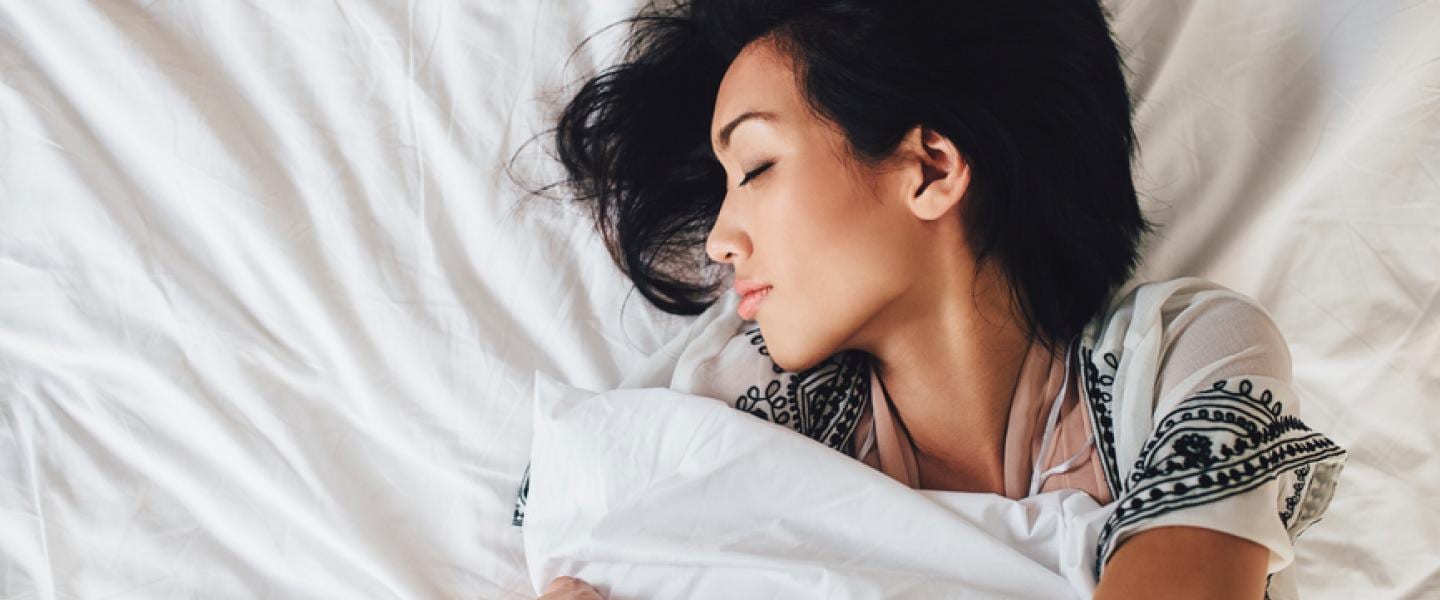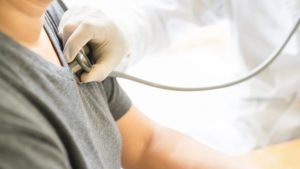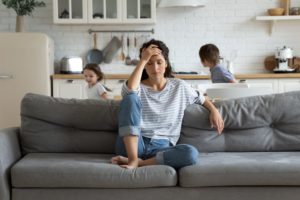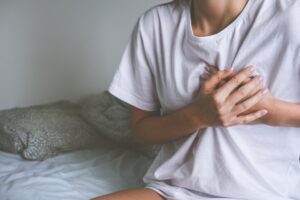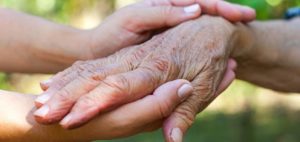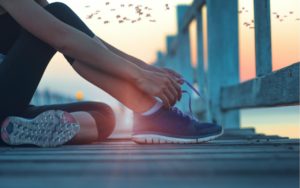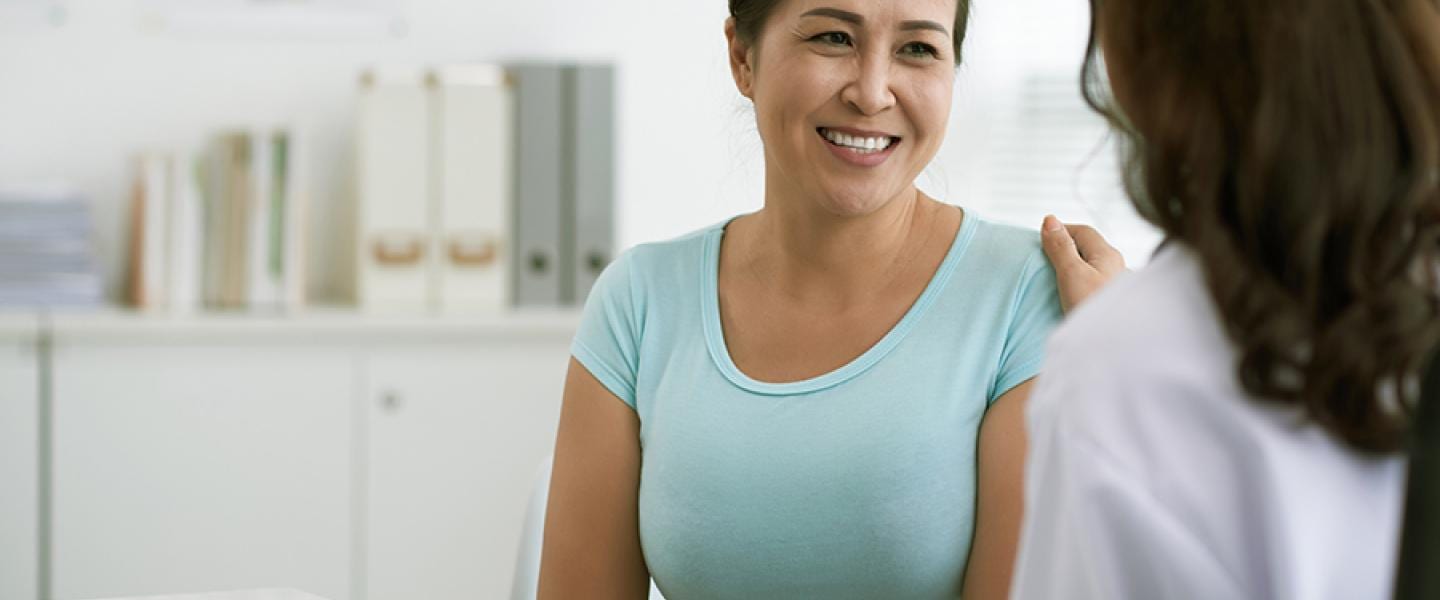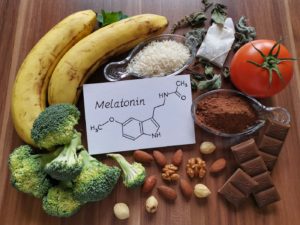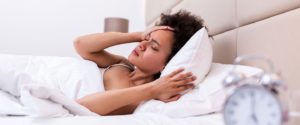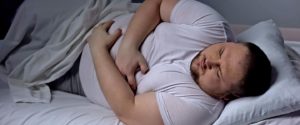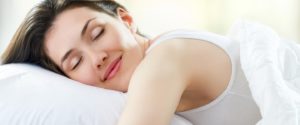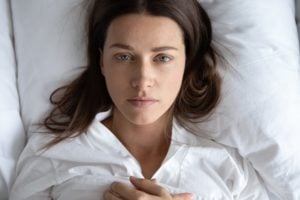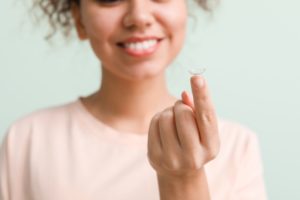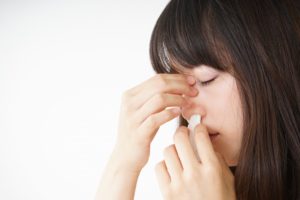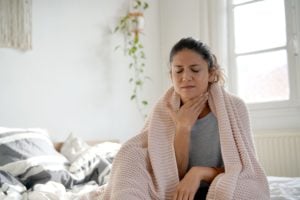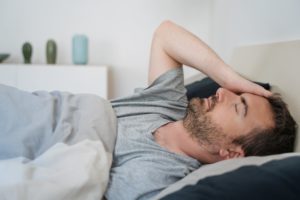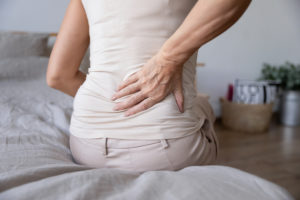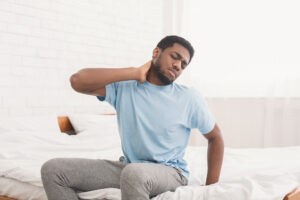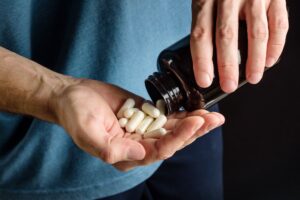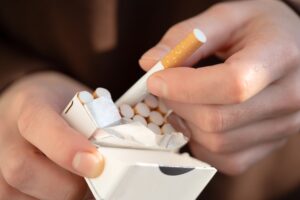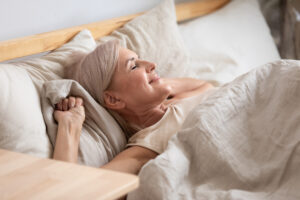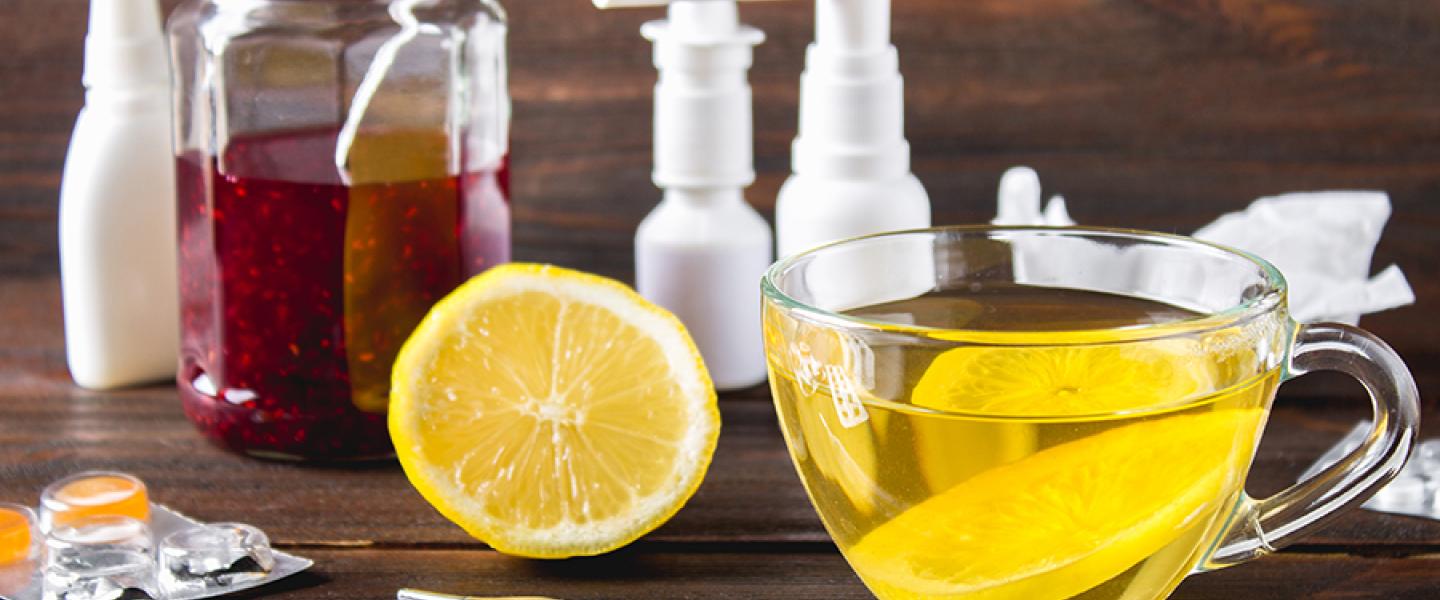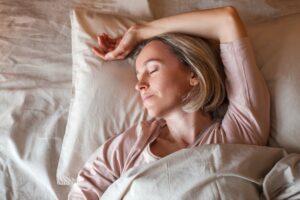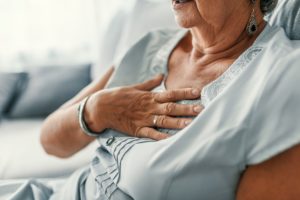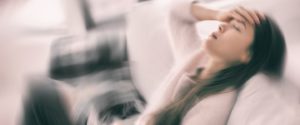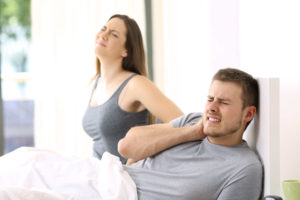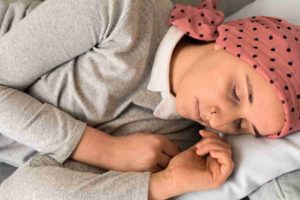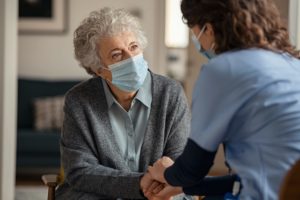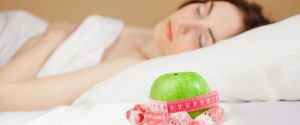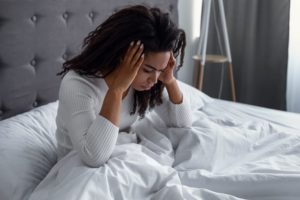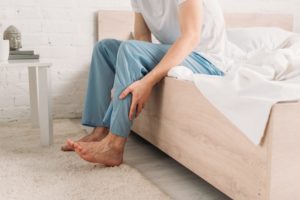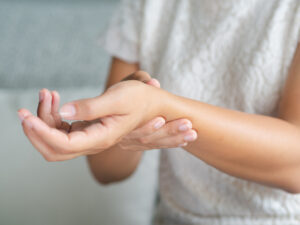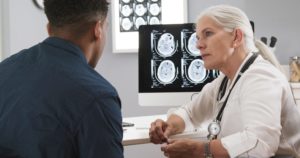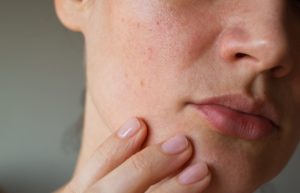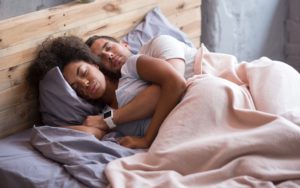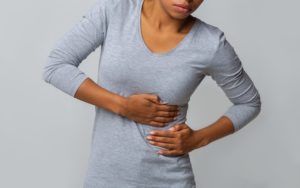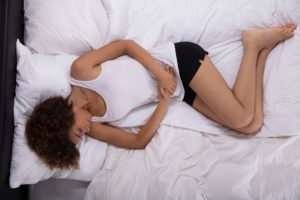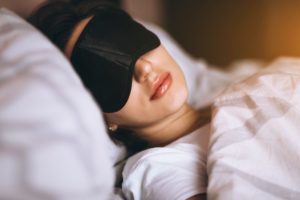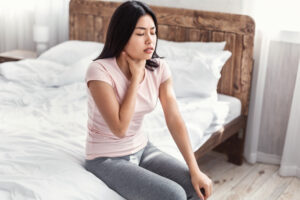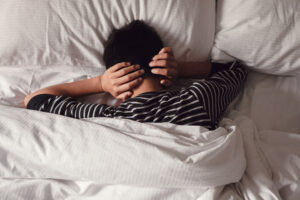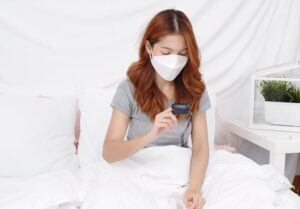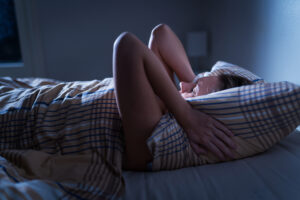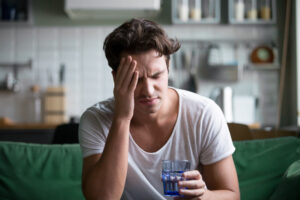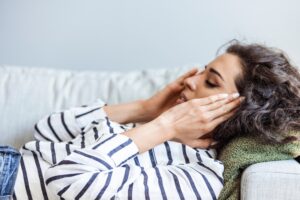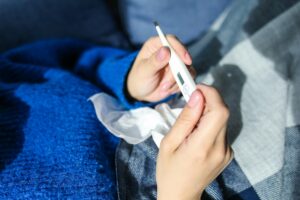When you buy through our links, we may earn a commission. Products or services may be offered by an affiliated entity. Learn more.
Nocturia: Frequent Urination at Night
- Definition: Nocturia is a condition that’s categorized by getting out of bed at night to urinate more than once. It can also be called nocturnal urinary frequency, and can be caused by a number of different factors.
- Causes: Sleep disorders, reduced bladder capacity, and excess urine production can cause nocturia. Diabetes, heart disease, high blood pressure, certain medications, and drinking too many fluids before bed are all common causes, too.
- Symptoms: The most common symptom of disruptive nocturia is having to go to the bathroom two or more times per night. This may result in poor sleep and fatigue the next day.
- Treatment: Treatment typically focuses on addressing the underlying cause of nocturia. A treatment plan may also include lifestyle changes, sleep hygiene enhancements, medications, and pelvic floor exercises.
Millions of Americans are affected by the need to urinate more than once at night. This is also known as nocturia, and it’s often cited as a common cause of disruptive sleep. While it affects people over the age of 65, anyone can be diagnosed with nocturia, especially since it can be a symptom of pre-existing health conditions or the side effect of a medication.
Frequent trips to the bathroom can cause fragmented sleep and excessive daytime sleepiness. Luckily, steps can be taken to reduce nighttime bathroom trips and improve sleep. Understanding the basics about frequent nighttime urination, including its causes and treatments, can be the first step for people of any age to sleep better and with less bothersome nocturia.
What Is Nocturia?
Nocturia is described as the need to wake up more than once at night to urinate . Nocturia is widespread, with studies finding that it affects around 40% of adults ages 18 to 79 . While many people may not find one awakening to be problematic, nocturia tends to be more bothersome when it involves waking up two or more times a night .
Nocturia is not the same thing as bedwetting, which is also known as nocturnal enuresis. Unlike nocturia, which occurs after waking up and recognizing the need to urinate, bedwetting typically happens involuntarily and without the sensation of having a full bladder
Risk Factors
Nocturia can affect younger people, but it becomes more common with older age . Some degree of nocturia may affect up to 80% of older adults . Frequent nighttime urination often gets worse for older men and people assigned male at birth. Some estimate that around 50% of men in their seventies have to wake up at least twice per night to urinate .
Nocturia also frequently occurs during pregnancy but may go away within a few months after giving birth more common with older age .
Causes of Nocturia
The main causes of nocturia include producing excess urine at night, decreased bladder capacity, and sleep disruptions . Each of these issues can be caused by various lifestyle factors or underlying health conditions.
Drinking Too Much Water Close to Bedtime
Excess fluid intake late in the evening can increase the amount of urine the body produces, which contributes to frequent urination at night . For many people, this happens after drinking large volumes of water close to bedtime.
In addition, the impact of increased fluid intake before bed can be even greater when consuming liquids with diuretic effects (liquids that can increase urine output) , such as caffeine or alcohol .
Nocturnal Polyuria
Producing excess urine at night (known as nocturnal polyuria) may be the most common cause of nocturia. It’s estimated to be a contributing factor for up to 88% of cases of nocturia .
For some people, excess urine production occurs throughout the day and night. This condition, called global polyuria, is most often tied to excess fluid intake or diabetes, but it can also be related to issues like abnormal calcium levels and poor kidney function . Diuretics, including certain medications and substances like alcohol and caffeine, can cause enhanced urine production as well.
Elevated urine production that occurs only at night can occur with increased fluid intake in the evening. It can also occur when peripheral edema — swelling or fluid accumulation in the legs — relocates after a person moves into a lying position . Coexisting medical problems can contribute to peripheral edema and raise the risk of nocturnal polyuria.
Some research indicates that changes to the body’s circadian rhythm cause older adults to have a greater proportion of their daily urine production at night, which may be a contributing factor to higher rates of nocturia as people age .
Urinary Tract Infections (UTIs)
Urinary tract infections (UTIs) are also a risk factor for nocturia because UTIs increase the perceived need to urinate. UTIs and other bladder infections can cause a person to feel that they need to urinate frequently even if they don’t actually have greater nighttime urine production.
Benign Prostatic Hyperplasia (BPH)
Nocturia is more common in people who struggle to fully void the urine from their bladder . For example, this is a common symptom of having an enlarged prostate, also known as benign prostatic hyperplasia (BPH) . An enlarged prostate narrows the urethra, making it harder for a person to empty their bladder. This problem can get worse over time .
Sleep Apnea
Nocturia occurs in up to 50% of people with obstructive sleep apnea (OSA) . OSA causes repeated pauses in breathing during the night, reducing airflow and oxygen levels during sleep. In the process, OSA affects the hormones that control urine production, leading to more frequent urination. On top of that, people with OSA have frequent sleep interruptions, so they are more likely to become aware of the need to urinate at night.
Medications That Contain a Diuretic
Increased urine production sometimes occurs as a side effect of taking certain medications . While some drugs are prescribed specifically for their diuretic effect, other drugs can also cause the body to produce more urine. Examples include some drugs for high blood pressure and heart disease and for neurodegenerative diseases like dementia and Parkinson’s disease .
Aging
Research in older adults indicates that lighter sleep may increase susceptibility to nocturia. Older people spend less time in deep sleep stages, which means they are more easily awoken. Older adults have also been found to produce more of their daily urine at night. This demonstrates how multiple factors can work simultaneously to cause frequent nighttime urination.
Other Health Conditions
A number of other health conditions can affect urine production, bladder emptying, or the urge to urinate, leading to more frequent nighttime urination. Examples include:
- Overactive bladder syndrome
- Disrupted levels of hormones that regulate urine production
- Bladder stones
- Peripheral edema
- Heart failure
- Kidney disease
- Diabetes
- Venous insufficiency
- Brain or nervous system conditions, such as stroke
- Certain types of tumors in the pelvic area
Nocturia Symptoms and Diagnosis
The most common symptoms of problematic nocturia include:
- Waking up two or more times per night to urinate
- Disrupted sleep from having to go to the bathroom
- Daytime symptoms from poor sleep, such as drowsiness or irritability
Nocturia is defined by how frequently you wake up to urinate, not by urine volume. However, if more than a third of your total daily urine output occurs during the night, it can be a sign of nocturnal polyuria, which is a common cause of nocturia .
Preparing for Your Doctor Visit
To better understand your symptoms, your doctor will likely ask questions about your medical history and complete a physical examination.
To prepare for your doctor visit, it may help to keep a log of symptoms and other details, including:
- How many bathroom trips you make per night
- How difficult it is to fall back asleep after each trip
- How much liquid you consume throughout the day and in the evening
- What kinds of meals you eat and how much sodium you consume
- Any current medications you are taking
Following your visit, your doctor may recommend additional lab tests or bloodwork to identify potential causes of nocturia in your case.
Nocturia Treatment
Treating nocturia focuses on addressing any underlying medical conditions or habits that could be contributing to nighttime symptoms. Because it can have significant health consequences and connections to other illnesses, a doctor can give specific recommendations for managing nocturia based on the most likely cause.
Nocturia Medication
When an underlying condition is causing nocturia, treating that condition may reduce nighttime trips to the bathroom. Some patients with nocturia are treated with medications or adjustments to their existing medications.
For example, in males with an enlarged prostate (BPH), medications may be prescribed to try to reduce obstructions to the flow of urine . These medications may help empty the bladder and decrease the frequent urge to urinate . However, these drugs rarely fully resolve nocturia tied to BPH, and they can have serious side effects .
In other cases, doctors may prescribe medications if nocturia persists despite lifestyle changes or other treatments. Drugs known as bladder relaxants are designed to allow the bladder to hold more urine so that there is a less frequent urge to urinate . Antidiuretic drugs may also be prescribed to try to reduce urine production .
Pelvic Floor Exercises for Nocturia
Studies have found that pelvic floor exercises can help reduce nocturia and enhance sleep . These exercises, sometimes known as kegel exercises, may help strengthen the muscles that control urination .Experts recommend working with a physical therapist who has specific training in pelvic floor muscle exercises. A typical program can involve doing a series of exercises multiple times per week for at least four months .
Lifestyle Changes
A number of lifestyle changes may help reduce problematic nocturia. These changes may be designed to reduce nocturnal urine production and can include:
- Reducing evening fluid intake, especially before bed (while still remaining properly hydrated)
- Decreasing consumption of alcohol and caffeine, especially in the afternoon and evening
- Elevating the legs an hour or more before bed so the fluid in the legs can be converted to urine before falling asleep
Working with a doctor and making lifestyle changes can reduce the number of bathroom trips you take each night, but they may not eliminate them completely. For that reason, it’s important to take steps to make those trips as safe as possible, especially for older people.
Motion-activated, low-wattage lighting can also make it easier to walk safely to and from the bathroom at night. The path should be cleared of common trip hazards like cords or rugs. People with mobility issues or those who have high urgency to urinate upon awakening may find that a bedside urinal or commode can improve safety and reduce sleep disruption.
Sleep Hygiene
Focusing on sleep hygiene, which includes your bedroom environment and sleep habits, can reduce awakenings to go to the bathroom. Examples of healthy sleep habits include:
- Keeping a consistent sleep schedule, including waking up at the same time on weekdays and weekends
- Having a steady routine that gets you ready for bed each night
- Learning relaxation techniques that can put your mind at ease when you go to bed and when you want to fall back asleep after going to the bathroom
- Getting daily exercise that can help you have deeper sleep
- Setting up your bed with the best mattress, pillows, and bedding to promote comfort
- Customizing your bedroom to have a minimal light and noise, a cool temperature, and a pleasant smell
- Limiting the use of electronic devices, including smartphones, which can activate the brain and reduce the production of the sleep-promoting hormone melatonin
When to See a Doctor
If you find that you are peeing a lot at night — in particular, two or more times each night — or that the need to urinate is disrupting your sleep or daytime functioning, it’s important to discuss your symptoms with a health care provider.
Though nocturia is not a disease, it can have a significant impact on your day-to-day life. It may also be connected to underlying health problems, and nighttime bathroom trips can interfere with sleep and contribute to other health concerns.
It is especially important to see your doctor if nocturia suddenly gets more severe, as it may reflect the worsening of an underlying condition.
Frequently Asked Questions
What age does nocturia usually start?
Nocturia can affect people of any age, but bothersome nocturia is more likely to start after the age of 50 . Regular nocturia symptoms become even more common among adults over age 70, especially in men .
Does fibromyalgia cause nocturia?
Although nocturia is not one of the most recognized symptoms of fibromyalgia, some evidence suggests that nocturia could be more common in people with fibromyalgia.
Fibromyalgia is associated with light sleep that is easily disrupted
, and after awakening, a person may realize that they need to go to the bathroom. Fibromyalgia has also been linked to urinary issues like overactive bladder and urinary tract infections
. However, more research would be needed to determine whether fibromyalgia could be considered a direct cause of nocturia.
What is the best sleeping position for nocturia?
There is no specific sleeping position that has been shown to be best for nocturia. However, some experts suggest that elevating your legs in the hours before bedtime may reduce the need to urinate at night . This is because it helps get excess fluid out the legs so that it can be removed from the body before going to sleep .
What happens if nocturia is left untreated?
If left untreated, nocturia can cause significant sleep problems that negatively affect your overall quality of life
. Poor sleep from nocturia may cause you to feel more tired or fatigued during the day
. Nocturia has also been linked with other health issues, including worsened mood and a higher risk of injury from falls during the night
.

Still have questions? Ask our community!
Join our Sleep Care Community — a trusted hub of sleep health professionals, product specialists, and people just like you. Whether you need expert sleep advice for your insomnia or you’re searching for the perfect mattress, we’ve got you covered. Get personalized guidance from the experts who know sleep best.
References
21 Sources
-
Leslie SW, Sajjad H, Singh S. Nocturia. [Updated 2024 Feb 17]. In: StatPearls [Internet]. Treasure Island (FL): StatPearls Publishing; 2025 Jan-. Available from: https://www.ncbi.nlm.nih.gov/books/NBK518987/
https://www.ncbi.nlm.nih.gov/books/NBK518987/ -
van Kerrebroeck, P., Abrams, P., Chaikin, D., Donovan, J., Fonda, D., Jackson, S., Jennum, P., Johnson, T., Lose, G., Mattiasson, A., Robertson, G., Weiss, J., & Standardisation Sub-committee of the International Continence Society (2002). The standardisation of terminology in nocturia: report from the Standardisation Sub-committee of the International Continence Society. Neurourology and urodynamics, 21(2), 179–183.
https://onlinelibrary.wiley.com/doi/abs/10.1002/nau.10053 -
Tikkinen, K. A., Tammela, T. L., Huhtala, H., & Auvinen, A. (2006). Is nocturia equally common among men and women? A population based study in Finland. The Journal of Urology, 175(2), 596–600.
https://pubmed.ncbi.nlm.nih.gov/16407003/ -
Zumrutbas, A. E., Bozkurt, A. I., Alkis, O., Toktas, C., Cetinel, B., & Aybek, Z. (2016). The prevalence of nocturia and nocturnal polyuria: Can new cutoff values be suggested according to age and sex? International Neurourology Journal, 20(4), 304–310.
https://pubmed.ncbi.nlm.nih.gov/28043108/ -
van Kerrebroeck P, Abrams P, Chaikin D, et al. The standardisation of terminology in nocturia: report from the Standardisation Sub-committee of the International Continence Society. Neurourol Urodyn. 2002;21(2):179-183. doi:10.1002/nau.10053
https://pubmed.ncbi.nlm.nih.gov/11857672/ -
UpToDate. UpToDate. https://www.uptodate.com/contents/nocturia-in-adults-clinical-presentation-evaluation-and-management.
https://www.uptodate.com/contents/nocturia-in-adults-clinical-presentation-evaluation-and-management -
Duffy, J. F., Scheuermaier, K., & Loughlin, K. R. (2016). Age-related sleep disruption and reduction in the circadian rhythm of urine output: Contribution to nocturia? Current Aging Science, 9(1), 34–43.
https://pubmed.ncbi.nlm.nih.gov/26632430/ -
Urination – excessive amount: MedlinePlus Medical Encyclopedia. https://medlineplus.gov/ency/article/003146.htm.
https://medlineplus.gov/ency/article/003146.htm -
Maddukuri, G. (2022, December). Excessive or frequent urination. Merck Manual Consumer Version.
https://www.merckmanuals.com/home/kidney-and-urinary-tract-disorders/symptoms-of-kidney-and-urinary-tract-disorders/urination-excessive-or-frequent -
Torimoto, K., Hirayama, A., Samma, S., Yoshida, K., Fujimoto, K., & Hirao, Y. (2009). The relationship between nocturnal polyuria and the distribution of body fluid: assessment by bioelectric impedance analysis. The Journal of urology, 181(1), 219–224.
https://pubmed.ncbi.nlm.nih.gov/19013595/ -
A.D.A.M. Medical Encyclopedia. (2020, August 13). Urinary tract infection – Adults. MedlinePlus.
https://medlineplus.gov/ency/article/000521.htm -
National Institute of Diabetes and Digestive and Kidney Diseases. (2014, September). Prostate enlargement (benign prostatic hyperplasia).
https://www.niddk.nih.gov/health-information/urologic-diseases/prostate-problems/prostate-enlargement-benign-prostatic-hyperplasia -
Enlarged prostate (Benign prostatic hyperplasia). National Institute of Diabetes and Digestive and Kidney Diseases. https://www.niddk.nih.gov/health-information/urologic-diseases/prostate-problems/enlarged-prostate-benign-prostatic-hyperplasia. Published August 12, 2025.
https://www.niddk.nih.gov/health-information/urologic-diseases/prostate-problems/enlarged-prostate-benign-prostatic-hyperplasia -
McKeever RG, Patel P, Hamilton RJ. Calcium Channel Blockers. [Updated 2024 Feb 22]. In: StatPearls [Internet]. Treasure Island (FL): StatPearls Publishing; 2025 Jan-. Available from: https://www.ncbi.nlm.nih.gov/books/NBK482473/
https://www.ncbi.nlm.nih.gov/books/NBK482473/ -
Farzam K, Jan A. Beta Blockers. [Updated 2023 Aug 22]. In: StatPearls [Internet]. Treasure Island (FL): StatPearls Publishing; 2025 Jan-. Available from: https://www.ncbi.nlm.nih.gov/books/NBK532906/
https://www.ncbi.nlm.nih.gov/books/NBK532906/ -
Singh R, Sadiq NM. Cholinesterase Inhibitors. [Updated 2023 Jul 17]. In: StatPearls [Internet]. Treasure Island (FL): StatPearls Publishing; 2025 Jan-. Available from: https://www.ncbi.nlm.nih.gov/books/NBK544336/
https://www.ncbi.nlm.nih.gov/books/NBK544336/ -
Frequent or urgent urination: MedlinePlus Medical Encyclopedia. https://medlineplus.gov/ency/article/003140.htm.
https://medlineplus.gov/ency/article/003140.htm -
Bladder stones: MedlinePlus Medical Encyclopedia. https://medlineplus.gov/ency/article/001275.htm.
https://medlineplus.gov/ency/article/001275.htm -
UpToDate. UpToDate. https://www.uptodate.com/contents/fibromyalgia-clinical-manifestations-and-diagnosis-in-adults.
https://www.uptodate.com/contents/fibromyalgia-clinical-manifestations-and-diagnosis-in-adults -
Puri BK, Lee GS. Overactive Bladder Symptoms in Patients with Fibromyalgia: A Systematic Case-Controlled Study. Rev Recent Clin Trials. 2021;16(2):202-205. doi:10.2174/1574887115999201006201328
https://pubmed.ncbi.nlm.nih.gov/33023435/ -
McClain J, Capo G, Terris M, Santamaria P, Rolle NA. Prevalence and Phenotype of Lower Urinary Tract Symptoms in Fibromyalgia: A Retrospective Observational Study at a Single Tertiary Medical Center. J Clin Med. 2025;14(15):5584. Published 2025 Aug 7. doi:10.3390/jcm14155584
https://pubmed.ncbi.nlm.nih.gov/40807201/





